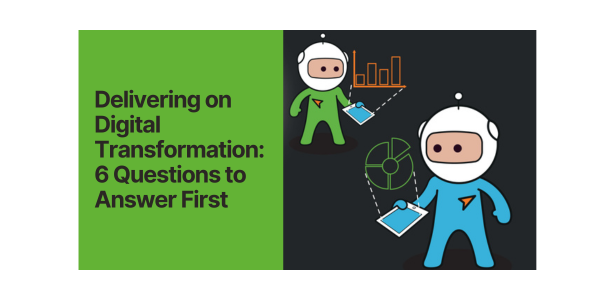Delivering on Digital Transformation: 6 Questions to Answer First
Lewis Marston
Dec 8, 2017 10:48:00 AM

Whether you're looking to optimise your business processes or streamline your operations, we have the expertise and experience to help you achieve project success.
Contact us today to discuss your needs further.
Learn how our SAP solution extensions can help your workforce reduce reliance on manual paper based activities and ensuring the ever changing needs of your supply chain operational workforce is supported.
Book a demo to learn more.
We work closely with our clients to understand their unique needs and challenges. Explore our SAP expertise services to learn more.

As the world becomes evermore connected, there’s a lot of talk about digital transformation and the opportunity it offers. But what does it mean for your business? Do you need to undertake it and why? And are you ready to do so?
From dialogue with customers and prospects, Rocket sees first hand the lack of clarity around what has become a catch-all term. Some companies recognise they need to address operational performance, whether that’s to be more efficient, to be more innovative or to run better. At the other end of the scale are organisations that know they need to fundamentally change the way they do business.
We often see enterprises that have established that they need to transform and have potentially identified the high-level business objectives, or perhaps even the service or operating models on which to base their future business. But while the intention is noted in the business strategy document, there are no plans in place to get there.
This isn’t down to lack of ambition; starting and running a transformation programme can be a daunting prospect. Even for an enterprise that knows where it wants to be, engaging in the activity to get it there is rarely easy. The issue is exacerbated for SMEs, who often lack the internal resource, methodology and processes to embark on a potentially complex journey.
Transformation discovery workshops bring clarity, vision and purpose; they help to define why the organisation is transforming, the opportunities this will generate and the journey to achieve this. They are an investment that guards against costly mistakes further down the line by drawing out key information and possibilities early in the process. Key considerations they will cover include:
Digital transformation is the change that comes about from overhauling business processes to incorporate digital strategies and technology so that the enterprise’s operations are radically different. However, it is often used interchangeably with business transformation, which is better understood and refers to altering the way in which a business runs.
In reality the two should be blended together (with business transformation being the springboard for digital transformation), but it needs to be clear from the outset what the outcome will be.
Business change demands huge commitment; it’s important therefore to identify what has driven the need for it. Often this will depend on the industry and the trends specific to it. Common drivers include the need to drive down price (due to increased competition or market deregulation for example), reduce operational costs or increase the focus on customer service.
Responding to these market challenges and customer demands might also provide a reason to completely reimagine the business.
The full picture must be visible from the outset, otherwise there’s a risk that only incremental changes will be made. While there is nothing wrong with this if it’s the objective, it rarely results in a totally changed proposition, and therefore may not deliver on the original business drivers. With the end point clearly on the horizon, the right course to get there can be plotted.
Crystalizing exactly what is to be achieved and why is critical; objectives need to be ambitious but also of value to the individual organisation. For example, the goal might be to drive up customer engagement but there needs to be a reason for this. The increased engagement needs to be harnessed to tangible outcomes such as generating more revenue, or greater customer retention.
Digital transformation, as noted above, is about adding digital technology, but this requires the right enterprise systems to support it. The transformation process needs to incorporate a strategic view of business IT systems to ensure that the organisation can reach the specified end point.
SMEs often have an advantage here, being more nimble and less wedded to unwieldy legacy systems. Cloud-based technologies have also helped to level the playing field by making the necessary tools accessible.
The whole organisation needs to be fully-engaged in a transformation programme, rather than regarding it as a process that is ‘done to’ it. This requires adopting the right methodology, implementing an organisational structure to support it and creating a culture that understands the need for change and embraces it.
We’ve covered Change Management in a previous post. It’s a key element of transformation projects because it ensures that the business goes from where it is now, to where it wants to be.
For more information on digital transformation, how it could help your business and taking the next steps to make it a reality, contact Rocket Consulting.